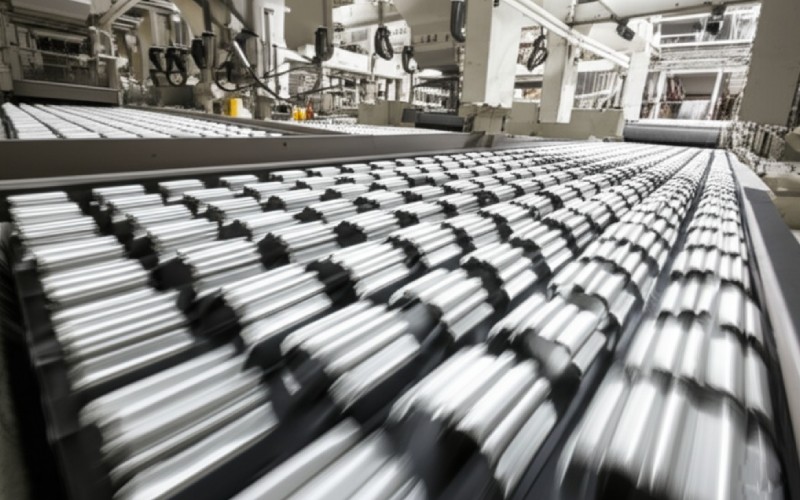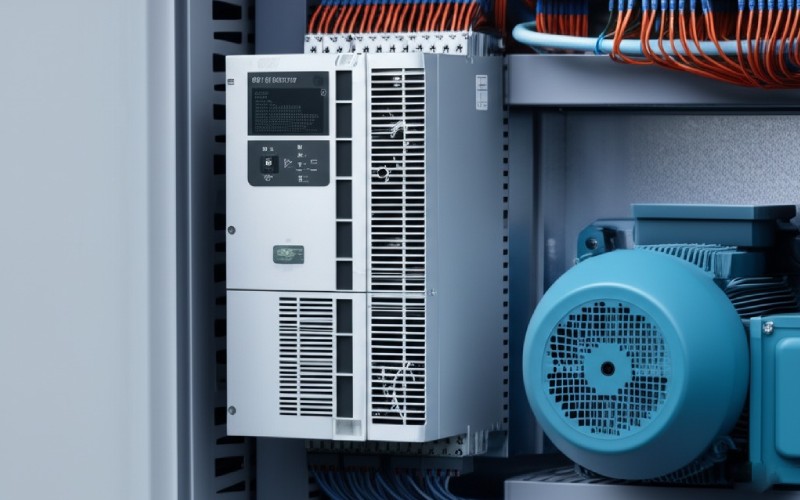Let Sino's Lamination Stacks Empower Your Project!
To speed up your project, you can label Lamination Stacks with details such as tolerance, material, surface finish, whether or not oxidized insulation is required, quantity, and more.

Ever questioned the motors in your devices? Some go for one speed, others can change their speed. This article will inform you all about fixed-speed and variable-speed electric motors, specifically for things like your air compressor. We’ll explore the distinction between a fixed-speed motor and a variable-speed motor. You’ll find out how they function, particularly in a variable-speed compressor system, and how a VSD (Variable Speed Drive) plays a role. Selecting the right one can save you power and cash. If you utilize any type of motor, or are thinking of acquiring brand-new devices, this is for you! Recognizing this distinction is essential, especially when we discuss a VSD in a variable-speed compressor configuration.
A fixed-speed motor is virtually what it sounds like. As soon as you transform it on, it intends to run at one consistent speed. Consider an old record player; it spins at 33 or 45 RPM, yet very little in between. These electric motors utilize straightforward electrical power, frequently AC power, to start and they keep that speed no matter if the task is difficult or simple then. The design is generally simple, typically an induction motor type. This suggests fewer parts that can break, which can occasionally suggest lower upfront cost and much easier repair.
Fixed-speed motors are fantastic for an application where you require a consistent rate of motion regularly. For example, a basic conveyor belt that just requires moving points from A to B at a consistent pace could use a fixed-speed motor. The speed of the motor does not alter. Its major task is to supply constant torque for a foreseeable load. They are made to run at their full speed efficiently.
The simpleness of a fixed-speed motor is its toughness for sure tasks. It doesn’t need intricate management systems. You turn a button, it runs. When it starts, there can be an inrush current as the motor gets up to its full speed. This is something to think about in its operational arrangement. If the load all of a sudden goes down, the motor still runs at its fixed speed, which may not be the most reliable use of power.
Currently, allows talk about its even more adaptable relative: the variable-speed motor. As the name informs you, this motor can alter its speed. It doesn’t need to run at a constant speed. Instead, it can adjust its speed according to the demands of the application. This is where things obtain interesting because you can make improvements exactly how your equipment jobs. Lots of contemporary motors use this modern technology.
These variable-speed electric motors usually deal with a special controller, which we’ll speak about the following, called a Variable Speed Drive or VSD. This drive assists the motor to accelerate or slow down. Think about it like the gas pedal in your cars and truck– you can go quicker or slower relying on what the roadway in advance resembles. This capability to vary its speed makes the motor far more versatile. For example, a pump may need to relocate a great deal of water in some cases, and only a little at other times. A variable-speed motor is ideal for that.
The layout of variable-speed motors can be a lot more intricate than fixed-speed ones. They might include different kinds of motor modern technology, like innovative DC motors or specially designed induction motor types that work well with a VSD. The vital advantage right here is adaptability and the prospective to improve efficiency, especially when the load change a lot. This implies the motor speed can be matched precisely to the task.

So, how does a variable-speed motor really change its speed? A lot of the time, it’s thanks to a brilliant item of electronics called a Variable Speed Drive (VSD). You might likewise hear it called a Variable Frequency Drive (VFD), as it usually works by transforming the variable frequency of the electrical power mosting likely to the motor.
A VSD takes the incoming AC power (which has a set regularity, like 60 Hz in the U.S.) and converts it. It initially transforms it to DC power, and after that it develops a new AC power signal where it can control the voltage and frequency. By altering the regularity, the VSD can alter the speed of the motor. It’s a cool procedure that provides you really precise speed control. This means the motor can perform at virtually any speed within its range, not just one or two fixed speeds.
This control indicates the motor only uses the power it needs. If the compressor or follower requires it to decrease, the VSD tells the motor to make use of much less electrical power. This can substantially lower power consumption. A VSD can likewise help shield the motor by giving a smoother beginning, instead of the abrupt surge you obtain with some fixed-speed electric motors. It can also assist stop overload conditions and minimize wear on the motor and connected devices.
You might assume that variable speed is constantly better. But that’s not true. There are times when a fixed-speed compressor or motor is the right selection for your application. If your requirement for pressed air, or whatever the motor is driving, is constant and predictable, a fixed-speed motor can be really reliable. For an instance, if an equipment in your process runs 24/7 and constantly needs the same amount of power or air flow, a fixed-speed service can be simpler and usually has a reduced initial price.
A client who had a very stable compressed air demand for a certain production process. We checked out both alternatives, and a fixed-speed compressor was the extra cost-effective option for them. Due to the fact that their load didn’t vary much, the energy savings from a variable speed drive wouldn’t have actually warranted the greater upfront price. These fixed-speed compressors are typically very reliable due to the fact that their style is less simpler, with fewer electronic components like a VSD that could potentially need fixing.
So, if your application requirements point to a regular output, a fixed-speed motor can be a workhorse. It will perform at a consistent speed, providing the power you require without hassle. The secret is that the load need to be stable. If the load is always high and matches the motor’s optimum operating factor, a fixed-speed motor can be rather reliable for that specific job.
The large reason lots of people pick a variable-speed compressor or variable-speed motors as a whole is energy savings. And let me tell you, these savings can be significant. If your need for compressed air (or whatever the motor is powering) fluctuates, a variable speed drive (VSD) allows the motor to adjust its speed appropriately. This suggests the motor isn’t going for full speed (and full energy use) when it doesn’t require to. This is where you see a big distinction in your energy bill.
Think of air compressors. In lots of shops and factories, there is a demand for air changes all day. Sometimes you require a whole lot, often extremely little. A fixed-speed compressor would go for full power and afterwards unload, or shut off and on a great deal, which can be inefficient and create wear. A variable-speed compressor with a VSD will just slow down the motor when need is reduced, and speed it up when demand is high. This matching of speed to load is what improves efficiency and cuts energy use significantly. This can likewise aid preserve a more consistent pressure in your air system.
The VSD technology is really proficient at making sure the electrical motor only does the job that’s required. This not just saves energy yet can likewise decrease the mechanical stress and anxiety on the compressor parts, potentially resulting in lower maintenance required gradually.
Beyond just energy savings, variable-speed motors (typically controlled by a VSD or VFD) offer a number of various other vital advantages. One large advantage is much better process control. Because you can exactly readjust the speed of the motor, you can fine-tune your application. Think of a fan that requires a particular air pressure, or a pump that requires a specific circulation rate. Variable speed makes this much less complicated to achieve and automate.
One more benefit is reduced mechanical anxiety on your devices. A VSD can supply a “soft start,” “implying the motor increases its speed slowly instead of snagging to life at complete speed. This gentle beginning reduces wear and tear on belts, gears, and the motor winding itself. It can likewise assist in securing the motor from an overload condition and protect against the motor from trying to attract excessive electrical current, which can make it overheat. This can prolong the life of the motor and other parts of the system.
Furthermore, variable-speed electric motors can often result in a quieter operating environment. When the motor isn’t going for full speed all the time, it generally makes less sound. This can be a large plus for employee convenience. The adaptability they supply additionally implies one piece of devices could be suitable for a wider range of jobs, as you can vary its outcome. The overall speed control capacity aids boost the entire procedure.
Yes, absolutely! While variable speed innovation is amazing, fixed-speed motors still have their place and supply their very own benefit in particular situations. The most obvious benefit is often the initial cost. A fixed-speed motor and its simpler control system are typically less expensive to purchase than variable-speed motors with their requiring VSD or VFD units. For an uncomplicated application with a constant load, this lower upfront cost can be extremely appealing.
Maintenance can often be simpler for a fixed-speed motor. Because the style is much less complex– no sophisticated drive electronics– there are fewer things that could need specialized repair. If you have personnel that are used to servicing a typical induction motor, they’ll likely be comfortable with a fixed-speed system. These motors are understood for their dependability when made use of in the right application.
If your application needs are extremely secure, implying the motor will perform at a consistent speed near to its full load a lot of the time, a fixed-speed motor can be just as reliable, and even more so, than a variable speed motor running frequently at full speed. The secret is that the load need to be constant and predictable. For some commercial tasks where the process never changes, a fixed-speed option is a completely reputable and cost-efficient option.

The nature of the load is most likely the solitary most significant consideration making a decision in between a fixed-speed and a variable-speed motor. Does this load stay the exact same all day, or does it vary a lot? Answering this concern will aim you in the appropriate direction. This will certainly identify the speed demands.
If your application has a constant load — meaning the motor works at a consistent rate pretty much all the time– then a fixed-speed motor is usually a good, affordable selection. It’s developed to operate successfully at its rated speed and load. There’s no actual advantage in including the complexity and cost of a VSD if the speed doesn’t require it to change. The motor offers the necessary torque regularly.
However, if the load on your motor modifications regularly or substantially, that’s where variable speed shines. Consider an HVAC fan or a compressor where demand varies. A fixed-speed motor would certainly either be running inefficiently at reduced load or biking on and off, which squanders power and can strain the equipment. A variable-speed motor with a VSD can change its speed to match the load specifically, saving energy and giving far better control. This capability to vary its speed according to requirement is critical for efficiency.
Yes, you certainly can incorporate fixed-speed and variable-speed motors in a larger system, and sometimes it’s the smartest style approach. I’ve seen this done effectively in numerous industrial setups, particularly with air compressors. You might have a “base load” compressor that is a fixed-speed device, developed to deal with the minimum, consistent air demand extremely efficiently.
Then, to take care of the heights and variants popular over that base load, you would certainly include a variable-speed compressor (one with a VSD). This variable-speed unit, probably a variable-speed compressor specifically designed for this, would certainly then trim the supply, speeding up or slowing down its motor to perfectly match the fluctuating component of compressed air demand. This mix can supply a good balance of upfront cost, energy efficiency, and integrity.
This sort of hybrid system allows each motor type to do what it does ideal. The fixed-speed motor provides trustworthy, efficient power for the regular part of the load, while the variable-speed motor gives the versatility and energy savings for the variable part. It’s about selecting the ideal device for each component of the task to optimize the overall performance of the system. This frequently includes controlling the inlet valve and total air flow with better accuracy.
The future for motor speed control, specifically right here in the U.S., is absolutely leaning more and more towards variable speed solutions, especially with VSD (Variable Speed Drive) and VFD (Variable Frequency Drive) technology. They promote higher energy performance as a substantial motorist. As energy costs increase and ecological problems grow, anything that can reduce electricity usage is obtaining a great deal of interest. Variable-speed motors are a vital part of that.
We’re seeing much more advances in VSD design — they’re diminishing, smarter, and a lot more efficient. Many now feature integrated diagnostics and can connect to factory control systems to further automate and optimize processes. This suggests better speed control, extra information for upkeep, and a much easier integration right into commercial systems. The capability to preciesly manage motor rate not only saves energy yet likewise can boost product high quality and decrease waste in numerous applications.
I anticipate we’ll see variable speed technology end up being standard in many more kinds of equipment, not just huge air compressors or pumps. Also smaller electric motors use this to acquire an advantage. The initial cost distinction between fixed-speed and variable-speed options is additionally shrinking, making the cost premium for VSD technology simpler to validate with the long-term energy savings. It’s an amazing time for motor technology, and the capacity to carefully manage movement and speed is central to that progression.